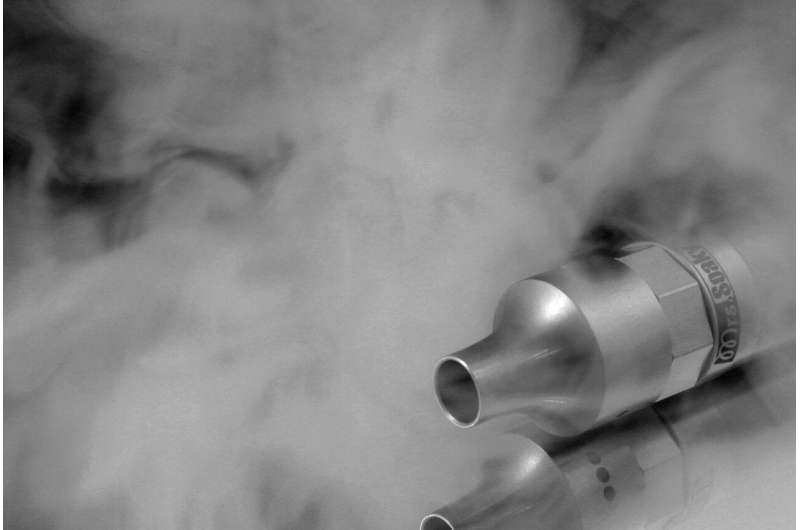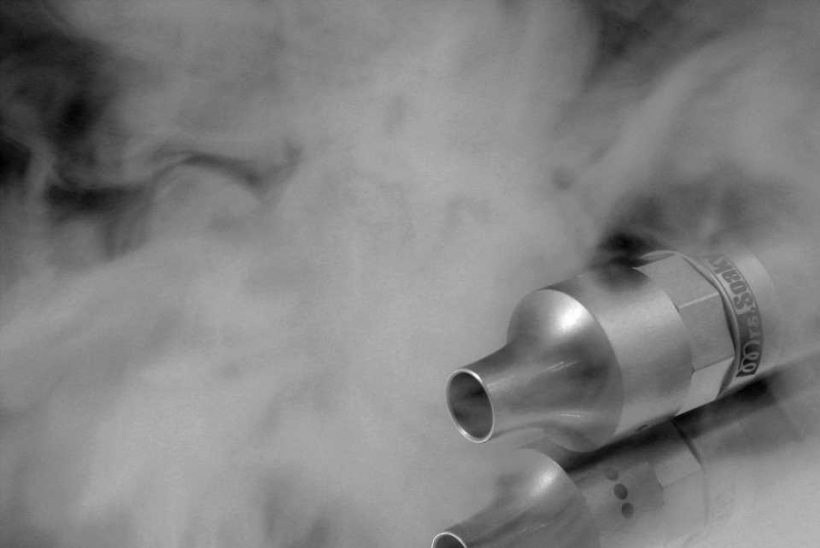
Using pod-based electronic cigarettes may lead to exposure to volatile organic compounds (VOCs) that may negatively affect cardiovascular health in a similar manner to smoking traditional cigarettes, according to preliminary research to be presented at the American Heart Association’s Scientific Sessions 2022. The meeting, held in person in Chicago and virtually, Nov. 5-7, 2022, is a premier global exchange of the latest scientific advancements, research and evidence-based clinical practice updates in cardiovascular science.
VOCs are a broad group of gases found in many common items, such as cleaning products, paint, cigarettes, vehicle exhaust, pesticides and other substances. According to the U.S. Environmental Protection Agency, the ability of volatile organic chemicals to cause health effects varies greatly from being highly toxic to having no known health effect.
“Pod-based electronic cigarettes are commonly marketed to youth and young adults, as well as people attempting to quit or reduce smoking regular cigarettes,” said lead study author Sana Majid, M.D., M.S., a postdoctoral fellow at Boston University School of Medicine. “However, the long-term health effects of using these novel tobacco products are currently unknown, which is why we conducted this study.”
As part of the American Heart Association’s Tobacco Center for Regulatory Science (TCORS), Majid and colleagues evaluated the impact of pod-based e-cigarettes on heart health. This observational study, in which participants visited the study center once compared vascular effects related to VOC exposure among pod-based e-cigarette users, combustible cigarette users and people who reported no tobacco or nicotine use.
The study included 106 young adults, ages 18–45 years, without cardiovascular disease or risk factors (no diagnosis or increased risk of hypertension, Type 2 diabetes or dyslipidemia (high cholesterol)). Participants were recruited between 2019 and 2021 at Boston University School of Medicine and at the University of Louisville in Louisville, Kentucky. Participants were primarily local residents, as well as students and faculty members. Participants self-identified as 49% male and 51% female; 35% of pod-based e-cigarette users were female, 33% of combustible cigarette users were female and 81% of tobacco non-users were female.
Approximately 45% (48) of participants used pod-based e-cigarettes; 20% (21) smoked combustible cigarettes; and 35% (37) reported no use of tobacco in any form. At the time of the study, 37% of the pod-based e-cigarette users reported they had never smoked traditional cigarettes; 64% exclusively used e-cigarettes; and 36% used both e-cigarettes and combustible cigarettes.
Participants’ vascular function (functioning of the arteries and veins that circulate blood throughout the body) and blood pressure were measured before and after they used their preferred tobacco product for 10 minutes. Measurements were taken in one day, in one clinic visit for each participant. Vascular function was measured by looking at flow-mediated dilation of the brachial artery—the widening of the artery in the arm in response to increased blood flow—both before and 30 minutes after participants used their preferred tobacco product, with a single measurement taken at both points in time. Blood pressure and heart rate were measured 10 minutes after participants used their preferred tobacco product, with researchers recording the average of three readings before and after product use. The levels of VOCs in the urine were measured at baseline and one hour after the use of either e-cigarettes or traditional cigarettes.
The results found that young adults who use pod-based e-cigarettes had changes in blood vessel health similar to traditional cigarette smokers:
- Pod-based e-cigarette users and combustible cigarette users had 8% higher blood pressure compared to non-users.
- Participants who used pod-based e-cigarette and people who smoked traditional cigarettes also had increased heart rates compared to non-users of any tobacco product.
- Elevated levels of VOCs in users of e-cigarettes and combustible cigarettes were associated with changes in vascular health measures. These included decreased artery dilation, which is important for circulation and vascular health.
“Our findings demonstrate that pod-based e-cigarette use had long- and short-term effects on the vascular system in healthy young adults, including in those who have only smoked e-cigarettes and have never smoked combustible cigarettes. These results indicate that e-cigarettes release chemicals that are toxic to blood vessels, and the use of pod-based e-cigarettes may be associated with harm,” Majid said. The long-term effects included participants’ baseline reads for blood pressure and heart rate and the short-term effects included these reads after participants had used either e-cigarettes or combustible cigarettes.
The use of pod-based e-cigarettes has surged among youth and young adults in recent years. “Youth and young adults should avoid using any tobacco products including pod-based e-cigarettes because they may adversely affect blood vessel health. Setting regulations that make it more difficult for youth to start using e-cigarettes is an important part of achieving a tobacco-free future,” she continued. “We also need better approaches to help people to stop using all tobacco products and expand support and access to cessation programs and medications.”
The study limitations included the participants using their own tobacco product, making it difficult to isolate the effects of each of the individual components of the products, such as nicotine levels or flavors, as well as differences in vascular function within each participant that may be associated with using specific types or brands of tobacco products. Additionally, most participants used mint-flavored pods, and larger studies may be needed to capture differences associated with different flavor types.
Source: Read Full Article
